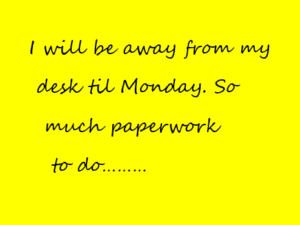Homesnacks.com combed through the data from the American Community Survey to see what Illinois cities (with populations over 5,000) grew the most from 2010 to 2014. The results were surprising; it’s great to see some of Illinois’ small towns experiencing growth spurts. Read on for the fastest-growing towns in Illinois!
Month : July 2017
Forbes’ annual list of America’s fastest-growing cities provides a holistic picture of places on the upswing. Here are the 25 metropolitan areas across the country experiencing the biggest surges, plus the growth rates and projections that got them on the list.
Full List: America’s Fastest-Growing Cities 2017
The only type of wallpaper you can safely clean by washing is vinyl. Even with vinyl, unless the care label says it’s scrubbable, use as little moisture and pressure as you can.
To wash vinyl wallpaper, use two buckets. Fill one bucket with a warm, soapy solution made from 20ml (1 tablespoon) of multi-purpose cleaner per 5 litres (1 gallon) of water. Put warm, clean water in the other bucket and use it to rinse your sponge so that you never bring dirty suds up to the paper.
Rinse and dry afterwards. For rinsing, use a slightly damp sponge, blotting it over the area you just washed. To dry the walls turn up the radiators or use an electric fan-heater so that the work is done for you. If this isn’t possible, you can lightly towel-dry the walls.
But take care: wet paper is fragile, so press the towel against the wall to blot up moisture rather than giving the wall a quick rubdown.
With non-vinyl wallpaper, the most you can do is spot clean. To do this using dry materials, you can try to soak out the grease and grime that make your wall look dull. You will need patience.
Hold a clean, absorbent cloth, or about four sheets of kitchen towel (paper towels), against the wall, then iron the cloth or sheets on a very low heat setting. The heat loosens dirt and oil, which the towelling absorbs. Another neat trick is to rub a slice of white bread against the paper which may draw out the grease element of the stain.
- Dish soap: Squirt the liquid soap onto the oil stain and add water. Scrub at the stain with a stiff brush and use a garden hose to rinse away the suds.
- Kitty litter: Cover the oil stain with cheap clay-based cat litter. Stomp on top of the litter granules to help it soak up the oil, then leave it out overnight. Sweep up the litter the next day, then hose off the area.
- Powdered laundry detergent: Sprinkle detergent on oil stain and add water. Scrub the stain with a stiff brush, then let sit for 30 minutes and hose off.
- Soda: Pour a can or two of Coca-cola, or a similar brand of cola, onto the stain. Let it sit overnight before cleaning further.
- Baking soda: Sprinkle a generous amount on the oil stain, then scrub with a stiff brush. Wait at least 30 minutes before rinsing off.
- WD-40 spray: Spray the stain with a generous amount before rinsing off with water.
- Oven cleaner: Spray the stain and let it sit for 5–10 minutes. Scrub it with a stiff brush, then use a hose at the highest pressure setting to rinse it away.
Keep painted walls looking fresh with preventive maintenance and simple cleaning methods.
Preventive Maintenance
Maintain a freshly painted look on your walls by keeping them free of dust and spots. Plus, preventive maintenance means less time spent scrubbing later.
Vacuum walls with a soft brush attachment. Then wipe them down with a cloth-covered broom or mop (spray with a dusting agent for best results) or use an electrostatic dusting wipe. Wipe away fingerprints and other marks soon after they appear. Avoid using an excessive amount of water.
Walls Painted with Latex Paint
Wash walls painted with latex paint using warm water and a nonabrasive all-purpose cleaner. Dip a clean sponge in the water, then wring it dry. Gently rub the wall. Pay special attention to areas that get touched often — such as around doorknobs and light switches. Rinse with a second sponge and clear water. Take care not to wet areas around outlets, light switches, telephone jacks, and other electrical connections. When scrubbing those spots becomes necessary, turn off electricity at the circuit breaker box.
For stubborn spots, such as fingerprints, newspaper smudges, or scuffs, make a paste of baking soda and water and rub the area with a nonabrasive pad. If cleaner (or white vinegar and water) doesn’t remove the grime or stain on painted woodwork, wipe the woodwork with a rag dampened with rubbing alcohol.
Walls Painted with Oil-Based Paint
Wash walls painted with oil-based paint in the same manner, substituting detergent solution (see below) for the cleaner or white vinegar mixture. Wring the sponge or cloth until only slightly damp. Texture-painted walls, such as those with a troweled finish, can be dust catchers and might require deeper cleaning. Add 1 ounce of borax to each pint of water to clean the wall.
Recipe for All-Purpose Detergent Solution
- Stir 1 teaspoon of liquid dish detergent into a quart of warm water.
- Add 1/4 teaspoon of white vinegar.
- Let solution sit on stain for 10 minutes before blotting.
Keep painted walls looking fresh with preventive maintenance and simple cleaning methods.
Preventive Maintenance
Maintain a freshly painted look on your walls by keeping them free of dust and spots. Plus, preventive maintenance means less time spent scrubbing later.
Vacuum walls with a soft brush attachment. Then wipe them down with a cloth-covered broom or mop (spray with a dusting agent for best results) or use an electrostatic dusting wipe. Wipe away fingerprints and other marks soon after they appear. Avoid using an excessive amount of water.
Walls Painted with Latex Paint
Wash walls painted with latex paint using warm water and a nonabrasive all-purpose cleaner. Dip a clean sponge in the water, then wring it dry. Gently rub the wall. Pay special attention to areas that get touched often — such as around doorknobs and light switches. Rinse with a second sponge and clear water. Take care not to wet areas around outlets, light switches, telephone jacks, and other electrical connections. When scrubbing those spots becomes necessary, turn off electricity at the circuit breaker box.
For stubborn spots, such as fingerprints, newspaper smudges, or scuffs, make a paste of baking soda and water and rub the area with a nonabrasive pad. If cleaner (or white vinegar and water) doesn’t remove the grime or stain on painted woodwork, wipe the woodwork with a rag dampened with rubbing alcohol.
Walls Painted with Oil-Based Paint
Wash walls painted with oil-based paint in the same manner, substituting detergent solution (see below) for the cleaner or white vinegar mixture. Wring the sponge or cloth until only slightly damp. Texture-painted walls, such as those with a troweled finish, can be dust catchers and might require deeper cleaning. Add 1 ounce of borax to each pint of water to clean the wall.
Recipe for All-Purpose Detergent Solution
- Stir 1 teaspoon of liquid dish detergent into a quart of warm water.
- Add 1/4 teaspoon of white vinegar.
- Let solution sit on stain for 10 minutes before blotting.
Death doesn’t take a holiday on July 4th. “On average, more people die in motor vehicle crashes on Independence Day than any other day of the year,” warns theInsurance Institute for Highway Safety.
http://www.cbsnews.com/news/july-4th-driving-dangerous-even-with-no-drinking/


